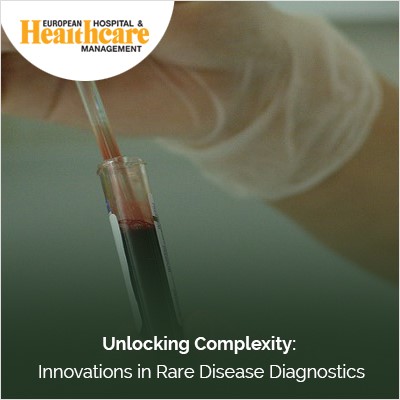This article explores cutting-edge innovations in rare disease diagnostics, including genomic sequencing, AI-driven data analysis, biomarker discovery, telemedicine, collaborative networks, and ethical frameworks. These advancements are revolutionizing precision medicine, leading to improved diagnosis, personalized treatments, and better outcomes for patients with rare diseases.

Rare diseases present unique challenges in healthcare due to their complexity and often elusive nature. Diagnosing these conditions requires a deep understanding of genetic, biochemical, and clinical factors, making innovation in rare disease diagnostics crucial for improving patient outcomes. In this article, we delve into the latest advancements that are unlocking the complexity of rare diseases and revolutionizing diagnostic approaches.
Whole Exome Sequencing (WES) and Whole Genome Sequencing (WGS): These techniques have significantly improved the ability to identify genetic variants associated with rare diseases. For example, in a study published in Nature Genetics, researchers used WES to diagnose rare neurodevelopmental disorders in pediatric patients, leading to tailored treatment plans and improved outcomes.
Targeted Gene Panels: Customized gene panels focusing on known disease-associated genes are increasingly used for rapid and cost-effective diagnosis. For instance, the use of a targeted gene panel for hereditary cancer syndromes helped identify pathogenic mutations in a cohort of patients, guiding personalized cancer risk management strategies.
Clinical Decision Support Systems: AI-powered platforms like IBM Watson for Genomics analyze genomic data, clinical notes, and medical literature to assist clinicians in diagnosing rare diseases. A case study in JAMA Oncology highlighted how AI-based tools improved the accuracy of cancer diagnoses and treatment recommendations.
Image Analysis Algorithms: In rare dermatological conditions, AI algorithms analyze skin lesion images to aid in diagnosis. For instance, a study in JAMA Dermatology demonstrated the efficacy of a deep learning algorithm in diagnosing rare skin disorders based on dermoscopic images.
Proteomics and Metabolomics: Advancements in mass spectrometry techniques have facilitated the discovery of protein and metabolite biomarkers for rare diseases. In a study published in Cell Reports Medicine, novel metabolic biomarkers were identified for a rare mitochondrial disorder, improving diagnostic accuracy and patient management.
Liquid Biopsy Biomarkers: Liquid biopsy assays targeting specific genetic mutations or tumor markers are revolutionizing cancer diagnostics. For example, in Clinical Cancer Research, researchers used ctDNA analysis to detect actionable mutations in rare lung cancers, guiding targeted therapy selection.
Integrative Omics Platforms: Tools that integrate genomics, transcriptomics, and proteomics data offer a comprehensive view of disease mechanisms. The Human Protein Atlas, for instance, integrates multi-omics data to map protein expression in tissues and cells, aiding in rare disease biomarker discovery and drug target identification.
Systems Biology Modeling: Computational models based on multi-omics data help unravel complex disease pathways. A study in Cell Systems used systems biology approaches to identify novel drug targets for a rare autoimmune disorder, paving the way for personalized treatment strategies.
Virtual Genetic Counseling: Telemedicine platforms connect patients with genetic counselors remotely, enhancing access to specialized rare disease expertise. Companies like Genome Medical offer virtual genetic counseling services, improving patient education and genetic testing utilization.
Remote Patient Monitoring Devices: Wearable devices and IoT sensors enable continuous monitoring of vital signs and disease-specific parameters. For instance, in NPJ Digital Medicine, a remote monitoring system for neuromuscular disorders improved early detection of disease progression and therapeutic response assessment.
International Rare Disease Registries: Initiatives like the Global Rare Diseases Registry facilitate data sharing among healthcare providers, researchers, and patient communities. This collective data pool supports large-scale epidemiological studies and genotype-phenotype correlation analyses.
Patient-Driven Research Consortia: Patient advocacy groups, such as the Cystic Fibrosis Foundation, collaborate with researchers and industry partners to accelerate drug development and diagnostic innovation. Their collaborative efforts led to the development of targeted therapies for rare genetic disorders.
Informed Consent and Genetic Counseling: Ensuring informed consent and providing genetic counseling services are crucial ethical considerations in rare disease diagnostics. The ACMG (American College of Medical Genetics and Genomics) guidelines provide ethical and clinical guidance for genetic testing and result interpretation.
Regulatory Approval Pathways: Regulatory agencies like the FDA and EMA have established pathways for accelerated approval of orphan drugs and breakthrough diagnostics for rare diseases. The FDA's Rare Diseases Program expedites review processes for innovative diagnostics and therapies addressing unmet medical needs.
In conclusion, innovations in rare disease diagnostics are reshaping the landscape of precision medicine. Genomic sequencing, AI-driven data analysis, biomarker discovery, liquid biopsies, multi-omics integration, telemedicine, collaborative networks, and ethical considerations collectively contribute to improved diagnosis, personalized treatment strategies, and better outcomes for patients with rare diseases. Continued investment in research, technology development, and interdisciplinary collaboration is key to unlocking the complexity of rare diseases and transforming healthcare delivery.